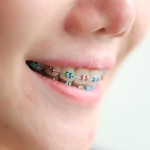
While fixed appliance therapy has been an effective approach for orthodontic treatment for more than a hundred years there has been a marked increase in the use of clear aligner systems in recent years. However, there are concerns over the level of supporting evidence.
The aim of this review was to assess whether treatment effectiveness of clear aligners was similar to the conventional fixed appliances.
Methods
Searches were conducted in the Pubmed, Web of Science, Embase, Scopus, and Cochrane Central Register of Controlled Clinical Trials Register databases. Comparative studies of the effectiveness of clear aligners versus fixed appliances were considered. Two reviewers screened studies and independently abstracted data. The Cochrane risk of bias tool was used to assess study quality of randomised controlled trials (RCTs) with Cohort studies being assessed using the Newcastle-Ottawa Scale. Meta-analysis was conducted when two or more studies reported the same outcome.
Results
- 8 studies (2 RCTs, 1 prospective cohort study, 5 retrospective cohort studies) were included.
- In total 353 patients received clear aligners and 353 fixed appliances.
- The 2 RCTs were considered to be of moderate quality and all the cohort studies considered to be of high quality.
- All the studies involved the Invisalign® aligner.
- Mean age of patients ranged from 15.5 to 35.2 years
- The objective grading system (OGS) was used to assess treatment effectiveness. Meta-analysis (2 studies) found no significant different in effectiveness between the two approaches WMD = 8.38, (95% CI; − 0.17 to 16.93).
- Meta-analysis (2 studies) demonstrated a significantly shorter treatment duration, WMD = − 6.31, (95% CI; − 8.37, − 4.24).
Conclusions
The authors concluded: –
The similar overall improvement in OGS scores indicated that both clear aligners and braces were effective in treating malocclusion. Clear aligners had advantage in segmented movement of teeth and shortening treatment duration. While braces were more effective in achieving great improvement, producing adequate occlusal contacts, controlling teeth torque, increasing transverse width and retention than aligners. Therefore, clinicians should consider the characteristics of these two orthodontic appliances when making treatment decision.
Comments
This review is the most recent of those that takes a look at the evidence for the effectiveness of clear aligners. The previous review by Papadimitriou et al (Dental Elf – 9th Nov 2018) focussed on just the Invisalign® aligner and while this review has searched a broad range of databases only study designs involving Invisalign® were included. The Papadimitriou review included more studies than the current review, so it is perhaps surprising that this reviews author are more positive regarding the effectiveness of aligners. In addition, both RCTs were assessed as being at high risk for one element of the Cochrane Risk of bias tool while this the blinding or participants and personnel it should be taken into consideration. So, while practical experience shows that clear aligners move teeth the quality of evidence to support their effectiveness and us remains very low and high quality well-reported studies are available particularly as use and scope of clear aligner treatment expands.
Links
Primary Paper
Yunyan Ke, Yanfei Zhuand Min Zhu. A comparison of treatment effectiveness between clear aligner and fixed appliance therapies. BMC Oral Health (2019) 19:24 https://doi.org/10.1186/s12903-018-0695-z
Other references
Dental Elf – 9th Nov 2018
Dental Elf – Clear Aligner blogs

[…] Aligners v fixed appliances for orthodontic treatment […]